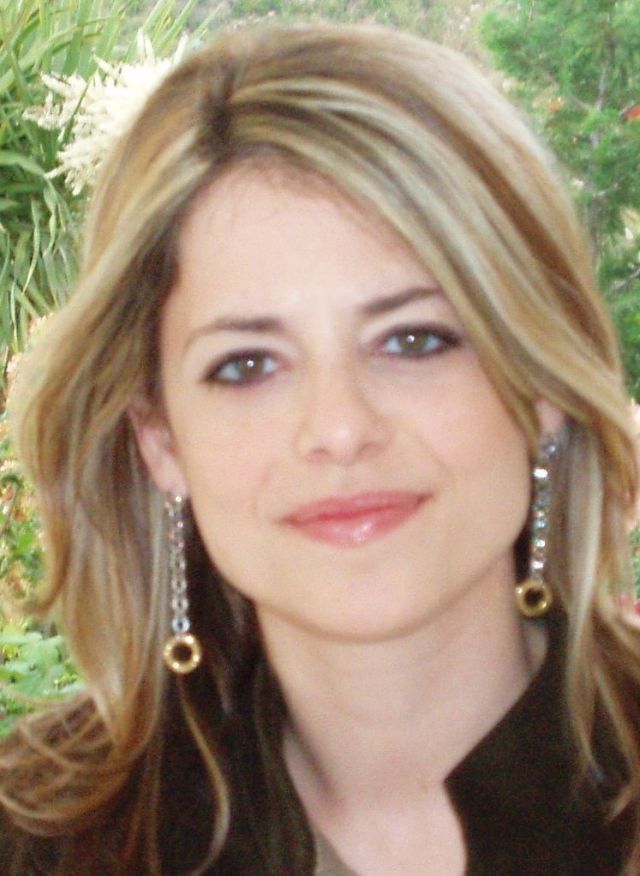C02Regulation of RNA metabolism, translation and protein degradation pathways in the host response to coronavirus infection
Michael Kracht
Prof. Dr. Michael Kracht
Rudolf-Buchheim-Institut für Pharmakologie
Justus-Liebig-Universität Gießen
Schubertstraße 81
35392 Gießen
Phone: 0641-99 47600
E-Mail: michael.kracht(at)pharma.med.uni-giessen(dot)de
In this project, we aim to develop an integrative (and comprehensive) molecular view on the human coronavirus (CoV) host response and to achieve deep mechanistic insights into the (coordinated) changes affecting host cell gene expression during viral replication. A specific overall goal is to define protein kinase modules that control transcriptional and post-transcriptional / translational levels of gene regulation. In the last funding period, by focusing on HCoV-229E, we systematically studied the host response to CoV at the signaling, chromatin and mRNA levels. We found that HCoV-229E causes an unconventional, attenuated activation of the NF-κB system, profoundly reshapes the genome-wide enhancer landscape in the nucleus of infected cells and strongly induces mRNAs encoding a set of transcription factors (TFs), inflammatory mediators and genes downstream of ER stress signaling involved in the unfolded protein response. However, genes upregulated at the mRNA level were often differentially expressed at the protein level. A combination of genetic and pharmacological loss of function experiments revealed a prominent activation of the PERK / IRE1α protein kinase systems by CoV and has led to the discovery of a potent antiviral effect of the ER stress trigger thapsigargin. Thapsigargin inhibits replication of HCoV-229E, MERS-CoV and SARS-CoV-2 in the lower nanomolar range and proteomic data suggest the involvement of ER-associated degradation (ERAD), autophagy and specific parts of the ubiquitin proteasome system in this effect. Together, these findings have resulted in multiple new insights into the CoV – host interactions, both at the level of individual molecules but also globally, that will be exploited in the third funding period. Part (A) of the work program defines four specific goals to identify (i) the chromatin-based mechanisms and genomic targets of the TFs ATF3, KLF6, ANKRD1 and c-JUN, (ii) the CoV-specific activation mechanisms, interactomes and functions of PERK and IRE1α, (iii) their roles in selective translation and (iv) the host cell factors required for CoV replication by unbiased genome-wide loss of function screens. Part (B) aims at identifying the molecular basis for the thapsigargin antiviral effects by focussing on (i) core ERAD components, (ii) factors involved in selective autophagy and (iii) candidate E1 and E2 enzymes, proteasome targeting factors (e.g. ubiquilins) and the role of the ubiquitin proteasome system in degrading viral components. In part (C) a final goal is to integrate the different levels of mechanistic, genome- and proteome-wide data into a (deep) holistic molecular view of the CoV host response also taking into account publically available data sets with the long-term aim to identify key nodes of signaling that distinguish the highly pathogenic from adapted human CoV and that are amenable to therapeutic intervention.
Project-related publications of the investigator:- Shaban MS, Muller C, Mayr-Buro C, Weiser H, Meier-Soelch J, Albert BV, Weber A, Linne U, Hain T, Babayev I, Karl N, Hofmann N, Becker S, Herold S, Schmitz ML, Ziebuhr J, Kracht M. 2021. Multi-level inhibition of coronavirus replication by chemical ER stress. Nat Commun 12:5536.
- Meier-Soelch J, Mayr-Buro C, Juli J, Leib L, Linne U, Dreute J, Papantonis A, Schmitz ML, Kracht M. 2021. Monitoring the Levels of Cellular NF-kappaB Activation States. Cancers (Basel) 13.
- Zarnack K, Balasubramanian S, Gantier MP, Kunetsky V, Kracht M, Schmitz ML, Strasser K. 2020. Dynamic mRNP Remodeling in Response to Internal and External Stimuli. Biomolecules 10.
- Kracht M, Muller-Ladner U, Schmitz ML. 2020. Mutual regulation of metabolic processes and proinflammatory NF-kappaB signaling. J Allergy Clin Immunol 146:694-705.
- Weber A, Dam S, Saul VV, Kuznetsova I, Muller C, Fritz-Wolf K, Becker K, Linne U, Gu H, Stokes MP, Pleschka S, Kracht M, Schmitz ML. 2019. Phosphoproteome Analysis of Cells Infected with Adapted and Nonadapted Influenza A Virus Reveals Novel Pro- and Antiviral Signaling Networks. J Virol 93.
- Mayr-Buro C, Schlereth E, Beuerlein K, Tenekeci U, Meier-Soelch J, Schmitz ML, Kracht M. 2019. Single-Cell Analysis of Multiple Steps of Dynamic NF-kappaB Regulation in Interleukin-1alpha-Triggered Tumor Cells Using Proximity Ligation Assays. Cancers (Basel) 11.
- Schmitz ML, Shaban MS, Albert BV, Gokcen A, Kracht M. 2018. The Crosstalk of Endoplasmic Reticulum (ER) Stress Pathways with NF-kappaB: Complex Mechanisms Relevant for Cancer, Inflammation and Infection. Biomedicines 6.
- Meier-Soelch J, Jurida L, Weber A, Newel D, Kim J, Braun T, Schmitz ML, Kracht M. 2018. RNAi-Based Identification of Gene-Specific Nuclear Cofactor Networks Regulating Interleukin-1 Target Genes. Front Immunol 9:775.
- Poppe M, Wittig S, Jurida L, Bartkuhn M, Wilhelm J, Muller H, Beuerlein K, Karl N, Bhuju S, Ziebuhr J, Schmitz ML, Kracht M. 2017. The NF-kappaB-dependent and -independent transcriptome and chromatin landscapes of human coronavirus 229E-infected cells. PLoS Pathog 13:e1006286.
C04RNA viruses induce heterologous immune protection from atopy and asthma
Chrysanthi Skevaki
PD Dr. Chrysanthi Skevaki
Institut für Laboratoriumsmedizin
Philipps-Universität Marburg
Baldingerstraße
35043 Marburg
Phone: 06421-58 63850
E-Mail: chrysanthi.skevaki(at)uk-gm(dot)de
We showed that a preceding influenza A H1N1 HH/05/2009 virus infection protects from experimental asthma in a murine model. The protective effect was dependent on cross-reactivity between virus- and allergen-derived epitopes at the level of CD44+ CD62L- T effector memory cells (Tem). Virus-induced T1 immune responses to allergens conferred a long-lasting protection. We were the first to demonstrate influenza-induced heterologous immune responses against allergens and aimed to investigate whether such responses were broadly applicable for several other RNA viruses and allergens. We have established and applied a robust bioinformatics pipeline (collaboration with Z02) for the identification of potentially cross-reactive epitope pairs between Respiratory Syncytial Virus (RSV), Rhinovirus (RV), SARS-CoV-2 and influenza virus strains of the 2019/2020 quadrivalent influenza vaccine (QIV) vs >2500 food and inhalant allergen protein sequences. In silico results from our extensive systematic approach generated a priority list of peptides, which were subsequently screened for MHC binding in vitro. Potentially cross-reactive RSV A2- and allergen-derived peptides which showed strong MHC binding, induced T cell activation and IFNγ production upon ex vivo stimulation of RSV-polarized lymphocytes. Importantly, combinatorial pentamer staining revealed truly cross-reactive T cells in the lungs of animals previously infected with RSV A2. Moreover, we provided proof-of-principle evidence for RV-mediated attenuation of allergen-induced experimental asthma. The remaining ultimate question is the clinical relevance of our findings for people with atopic asthma. We hypothesize that virus peptide immunization induces allergen-specific protective immune responses via attenuation of T2 responses to cross-reactive peptides. We thus aim to investigate whether immunization with RV- or RSV-derived cross-reactive peptides protect from experimental asthma either directly or via transfer of Tem from immunized mice. Second, we shall decipher airway immune signatures by means of mass cytometry (CyTOF) among animals developing allergen-induced experimental asthma vs. those that have been previously infected with an RNA virus or immunized with virus peptides and thereby protected from asthma development. Furthermore, we will examine the impact of RNA virus (RSV, RV) infection and of virus peptide immunization on the pulmonary virome composition and diversity, and thus its contribution to RNA virus-induced heterologous immune protection from asthma. Vaccination with the seasonal QIV is currently recommended for asthmatics based on most national immunization guidelines. We shall thus vaccinate wild type and Class I HLA transgenic mice before subjecting to experimental asthma, induced by allergens cross-reactive to the vaccine. Cross-reactive T cells will be deeply phenotyped by means of mass cytometry, tetramer staining, and transcriptomics. Finally, we shall investigate T cell cross-reactivity in the human context, i.e. among healthy controls and atopic individuals previously vaccinated with the seasonal influenza vaccine. Frequencies of cross-reactive T cells will be correlated with natural infection- and immunization-history. Results from this line of experimentation are expected to advise public health policies in regards to influenza vaccination and pave the way for clinical trials involving peptide immunization of atopic asthmatic individuals.
Project-related publications of the investigator:- Fragkou PC, De Angelis G, Menchinelli G, Can F, Garcia F, Morfin-Sherpa F, Dimopoulou D, Mack E, de Salazar A, Grossi A, Lytras T, Skevaki C. 2022. ESCMID COVID-19 guidelines: diagnostic testing for SARS-CoV-2. Clin Microbiol Infect doi:10.1016/j.cmi.2022.02.011.
- Feng A, Yang E, Moore A, Dhingra S, Chang S, Yin X, Pi R, Mack E, Volkel S, Gessner R, Gundisch M, Neubauer A, Renz H, Tsiodras S, Fragkou P, Asuni A, Levitt J, Wilson J, Leong M, Lumb J, Mao R, Pinedo K, Roque J, Richards C, Stabile M, Swaminathan G, Salagianni M, Triantafyllia V, Bertrams W, Blish C, Carette J, Frankovich J, Meffre E, Nadeau KC, Singh U, Wang T, Prak EL, Herold S, Andreakos E, Schmeck B, Skevaki C, Rogers A, Utz P. 2022. Autoantibodies targeting cytokines and connective tissue disease autoantigens are common in acute non-SARS-CoV-2 infections. Res Sq doi:10.21203/rs.3.rs-1233038/v1.
- Skevaki C, Ngocho JS, Amour C, Schmid-Grendelmeier P, Mmbaga BT, Renz H. 2021. Epidemiology and management of asthma and atopic dermatitis in Sub-Saharan Africa. J Allergy Clin Immunol 148:1378-1386.
- Skevaki C, Karsonova A, Karaulov A, Fomina D, Xie M, Chinthrajah S, Nadeau KC, Renz H. 2021. SARS-CoV-2 infection and COVID-19 in asthmatics: a complex relationship. Nat Rev Immunol 21:202-203.
- Renz H, Skevaki C. 2021. Early life microbial exposures and allergy risks: opportunities for prevention. Nat Rev Immunol 21:177-191.
- Chang SE, Feng A, Meng W, Apostolidis SA, Mack E, Artandi M, Barman L, Bennett K, Chakraborty S, Chang I, Cheung P, Chinthrajah S, Dhingra S, Do E, Finck A, Gaano A, Gessner R, Giannini HM, Gonzalez J, Greib S, Gundisch M, Hsu AR, Kuo A, Manohar M, Mao R, Neeli I, Neubauer A, Oniyide O, Powell AE, Puri R, Renz H, Schapiro J, Weidenbacher PA, Wittman R, Ahuja N, Chung HR, Jagannathan P, James JA, Kim PS, Meyer NJ, Nadeau KC, Radic M, Robinson WH, Singh U, Wang TT, Wherry EJ, Skevaki C, Luning Prak ET, Utz PJ. 2021. New-onset IgG autoantibodies in hospitalized patients with COVID-19. Nat Commun 12:5417.
- Balz K, Kaushik A, Chen M, Cemic F, Heger V, Renz H, Nadeau K, Skevaki C. 2021. Homologies between SARS-CoV-2 and allergen proteins may direct T cell-mediated heterologous immune responses. Sci Rep 11:4792.
- Balz K, Trassl L, Hartel V, Nelson PP, Skevaki C. 2020. Virus-Induced T Cell-Mediated Heterologous Immunity and Vaccine Development. Front Immunol 11:513.
- Skevaki C, Hudemann C, Matrosovich M, Mobs C, Paul S, Wachtendorf A, Alashkar Alhamwe B, Potaczek DP, Hagner S, Gemsa D, Garn H, Sette A, Renz H. 2018. Influenza-derived peptides cross-react with allergens and provide asthma protection. J Allergy Clin Immunol 142:804-814.
- Skevaki C, Van den Berg J, Jones N, Garssen J, Vuillermin P, Levin M, Landay A, Renz H, Calder PC, Thornton CA. 2016. Immune biomarkers in the spectrum of childhood noncommunicable diseases. J Allergy Clin Immunol 137:1302-16.
- Skevaki CL, Psarras S, Volonaki E, Pratsinis H, Spyridaki IS, Gaga M, Georgiou V, Vittorakis S, Telcian AG, Maggina P, Kletsas D, Gourgiotis D, Johnston SL, Papadopoulos NG. 2012. Rhinovirus-induced basic fibroblast growth factor release mediates airway remodeling features. Clin Transl Allergy 2:14.
- Skevaki CL, Christodoulou I, Spyridaki IS, Tiniakou I, Georgiou V, Xepapadaki P, Kafetzis DA, Papadopoulos NG. 2009. Budesonide and formoterol inhibit inflammatory mediator production by bronchial epithelial cells infected with rhinovirus. Clin Exp Allergy 39:1700-10.
C05Impact of virus and host factors on lung epithelial cell injury and repair in severe influenza virus pneumonia
Susanne Herold
Prof. Dr. med. Susanne Herold
Med. Klinik V, Infektiologie
Justus-Liebig-Universität Gießen
Klinikstraße 33
35392 Giessen
Phone: 0641-985 57060
E-Mail: Susanne.Herold(at)innere.med.uni-giessen(dot)de
Viral pneumonia is characterized by extensive lung injury, usually followed by stem cell-mediated epithelial repair. We recently defined a pool of bronchoalveolar stem cells (BASC) that repair both bronchial and alveolar tissue after IAV-induced injury. Using transgenic in vivo mouse and bronchoalveolar lung organoid (BALO) infection models, as well as first-in-man approaches such as inhalative granulocyte/macrophage colony-stimulating factor (GM-CSF) in patients with severe virus-induced lung injury, we revealed that BASC´s and alveolar epithelial cells type II´s regenerative responses depend on cooperation with district mesenchymal cells of the stem cell niche and on GM‑CSF release upon IAV infection.
Therefore, our main aims are to identify the host signaling pathways at the virus-host interface that drive alveolar epithelial cell injury and foster repair from distinct lung stem cell niches, and to elucidate how viral pathogenicity factors impact on these mechanisms, resulting in aggravated damage of the distal lung epithelium and in impaired or aberrant repair after virus-induced pneumonia.
Project-related publications of the investigator:- Vazquez-Armendariz AI, Herold S. 2021. From Clones to Buds and Branches: The Use of Lung Organoids to Model Branching Morphogenesis Ex Vivo. Front Cell Dev Biol 9:631579.
- Vazquez-Armendariz AI, Heiner M, El Agha E, Salwig I, Hoek A, Hessler MC, Shalashova I, Shrestha A, Carraro G, Mengel JP, Gunther A, Morty RE, Vadasz I, Schwemmle M, Kummer W, Hain T, Goesmann A, Bellusci S, Seeger W, Braun T, Herold S. 2020. Multilineage murine stem cells generate complex organoids to model distal lung development and disease. EMBO J 39:e103476.
- Schmoldt C, Vazquez-Armendariz AI, Shalashova I, Selvakumar B, Bremer CM, Peteranderl C, Wasnick R, Witte B, Gattenlohner S, Fink L, Vadasz I, Morty RE, Pleschka S, Seeger W, Gunther A, Herold S. 2019. IRE1 Signaling As a Putative Therapeutic Target in Influenza Virus-induced Pneumonia. Am J Respir Cell Mol Biol 61:537-540.
- Salwig I, Spitznagel B, Vazquez-Armendariz AI, Khalooghi K, Guenther S, Herold S, Szibor M, Braun T. 2019. Bronchioalveolar stem cells are a main source for regeneration of distal lung epithelia in vivo. EMBO J 38.
- El Agha E, Moiseenko A, Kheirollahi V, De Langhe S, Crnkovic S, Kwapiszewska G, Szibor M, Kosanovic D, Schwind F, Schermuly RT, Henneke I, MacKenzie B, Quantius J, Herold S, Ntokou A, Ahlbrecht K, Braun T, Morty RE, Gunther A, Seeger W, Bellusci S. 2017. Two-Way Conversion between Lipogenic and Myogenic Fibroblastic Phenotypes Marks the Progression and Resolution of Lung Fibrosis. Cell Stem Cell 20:261-273 e3.
- Quantius J, Schmoldt C, Vazquez-Armendariz AI, Becker C, El Agha E, Wilhelm J, Morty RE, Vadasz I, Mayer K, Gattenloehner S, Fink L, Matrosovich M, Li X, Seeger W, Lohmeyer J, Bellusci S, Herold S. 2016. Influenza Virus Infects Epithelial Stem/Progenitor Cells of the Distal Lung: Impact on Fgfr2b-Driven Epithelial Repair. PLoS Pathog 12:e1005544.
- Peteranderl C, Morales-Nebreda L, Selvakumar B, Lecuona E, Vadasz I, Morty RE, Schmoldt C, Bespalowa J, Wolff T, Pleschka S, Mayer K, Gattenloehner S, Fink L, Lohmeyer J, Seeger W, Sznajder JI, Mutlu GM, Budinger GR, Herold S. 2016. Macrophage-epithelial paracrine crosstalk inhibits lung edema clearance during influenza infection. J Clin Invest 126:1566-80.
- Herold S, Hoegner K, Vadasz I, Gessler T, Wilhelm J, Mayer K, Morty RE, Walmrath HD, Seeger W, Lohmeyer J. 2014. Inhaled granulocyte/macrophage colony-stimulating factor as treatment of pneumonia-associated acute respiratory distress syndrome. Am J Respir Crit Care Med 189:609-11.
- Unkel B, Hoegner K, Clausen BE, Lewe-Schlosser P, Bodner J, Gattenloehner S, Janssen H, Seeger W, Lohmeyer J, Herold S. 2012. Alveolar epithelial cells orchestrate DC function in murine viral pneumonia. J Clin Invest 122:3652-64.
- Herold S, Tabar TS, Janssen H, Hoegner K, Cabanski M, Lewe-Schlosser P, Albrecht J, Driever F, Vadasz I, Seeger W, Steinmueller M, Lohmeyer J. 2011. Exudate macrophages attenuate lung injury by the release of IL-1 receptor antagonist in gram-negative pneumonia. Am J Respir Crit Care Med 183:1380-90.
- Cakarova L, Marsh LM, Wilhelm J, Mayer K, Grimminger F, Seeger W, Lohmeyer J, Herold S. 2009. Macrophage tumor necrosis factor-alpha induces epithelial expression of granulocyte-macrophage colony-stimulating factor: impact on alveolar epithelial repair. Am J Respir Crit Care Med 180:521-32.
- Herold S, Steinmueller M, von Wulffen W, Cakarova L, Pinto R, Pleschka S, Mack M, Kuziel WA, Corazza N, Brunner T, Seeger W, Lohmeyer J. 2008. Lung epithelial apoptosis in influenza virus pneumonia: the role of macrophage-expressed TNF-related apoptosis-inducing ligand. J Exp Med 205:3065-77.







